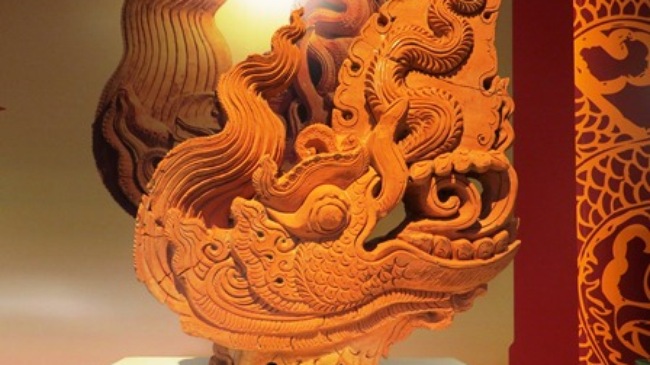Hundreds of artifacts recently unearthed at the Imperial Citadel of Thang Long are on view at an exhibition in Hanoi, the Vietnamese Ministry of Culture, Sports, and Tourism said Thursday on its website.
Around 150 archeological objects having been found at the site since 2010 are being showcased at the exhibition that opened on October 1 at the Hanoi-Thang Long Heritage Conservation Center at 12 Nguyen Tri Phuong Street, Ba Dinh District. The organizer said the event will run until another expo is organized to take its place.
The exhibit offers local and foreign visitors a chance to have a better understanding of and fuller look at the archeological objects of Vietnam’s past dynasties, including Ly, Tran, Early Le, Mac, Later Le, and Nguyen.
Besides ancient decorations, the expo includes many aesthetic artifacts in the shape of a statue, plywood, and sword, whose designs bear the image of the dragon.
A photo exhibition centered on the historic citadel and related activities are also taking place at the same venue.
It introduces around 200 photographs and documents that give visitors an overview of the citadel’s development history, as well as the process of researching, conserving, and promoting the site.
Both events are part of the activities to mark the 60th anniversary of Hanoi’s liberation. The Vietnamese capital city was completely freed from French colonial rule on October 10, 1954, following the historic Dien Bien Phu victory.
The Imperial Citadel of Thang Long, one of the country’s momentous relics, is a cultural complex initially built during the Ly Dynasty (1009–1225) and subsequently expanded by the Tran, Le and Nguyen Dynasties. The central area of the imperial citadel was listed as a UNESCO World Heritage Site in 2010.
The royal palaces and most of the structures in the complex were in deteriorating conditions by the late 19th and 20th centuries. Only in the 21st century did systematic excavations begin on its ruined foundations.
The first remains were unearthed on the site of the former Ba Dinh Hall or the old National Assembly Building, which was demolished in 2008 to make room for a new parliament building.
Like us on Facebook or follow us on Twitter to get the latest news about Vietnam!





















































